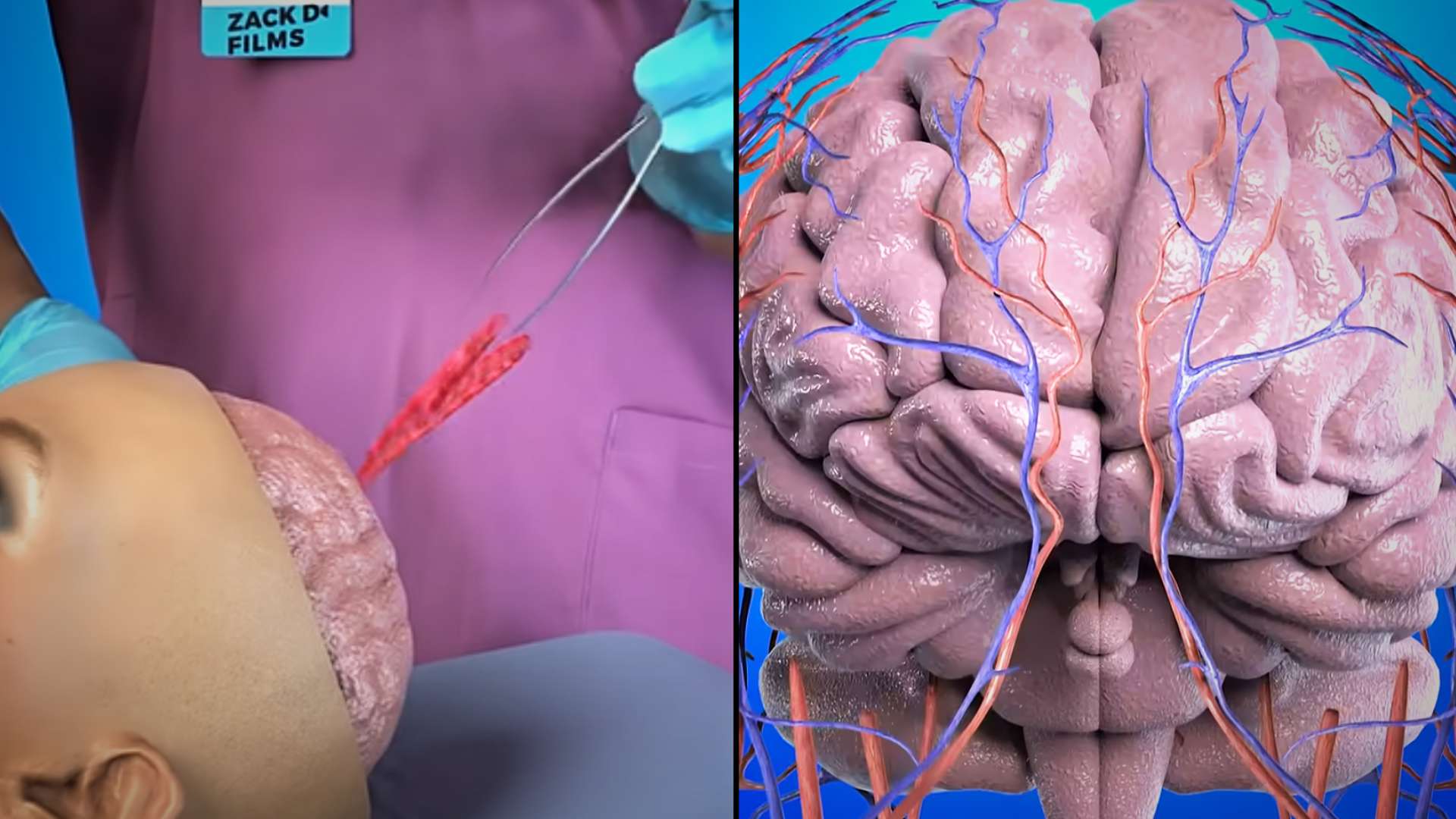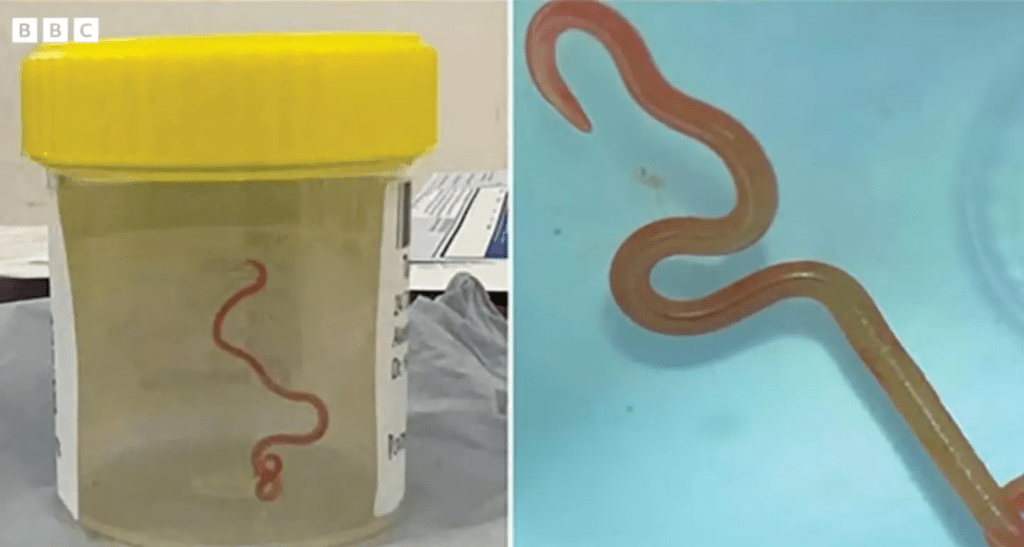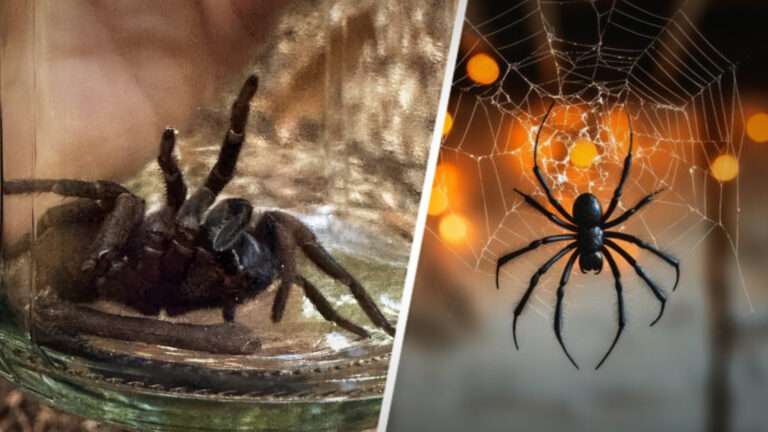Woman’s ‘Worst Nightmare’ Revealed: How a 3-Inch Worm Found Its Way Into a Brain After Eating Vegetables

Imagine eating a meal, especially a healthy one like vegetables, and unknowingly ingesting something that could land a parasite inside your brain. This is the exact nightmare scenario faced by a 64-year-old woman in Australia who had to undergo brain surgery after doctors discovered a live, three-inch worm living inside her brain. The incident has shocked many, turning it into a medical mystery of the highest order.
Let’s dive into this bizarre story, breaking it down, step by step, with all the important details and reactions, while exploring social media’s perspective on the creepy occurrence. We’ll also touch on the lessons we can all learn from this case, so buckle up for a wild ride through a world-first medical discovery.
A Startling Discovery: Worm in the Brain
In 2021, a woman from Australia began experiencing a series of alarming health problems. It started with common symptoms like stomach pain, diarrhea, fever, and a persistent cough. But as time went on, her symptoms worsened. She developed issues with memory and felt increasingly depressed, prompting her to return to the hospital for further evaluation. After several visits and numerous tests, the doctors finally decided to perform an MRI. What they found would leave even the most seasoned medical professionals stunned: a foreign object in her brain.
The discovery led to an emergency operation. As surgeons proceeded with the delicate procedure, they were horrified to find a live worm—measuring three inches—inside the woman’s brain. This was no ordinary parasite. After careful analysis, experts identified the worm as Ophidascaris robertsi, a roundworm typically found in pythons.
This discovery is a world-first—never before has a live worm been discovered in the human brain, adding to the rarity of the case. What made this event even more surprising is how the worm made its way into the woman’s body, highlighting the risks that come with eating vegetables and wild greens that could be contaminated.

How Did a Snake Worm Get into a Human’s Brain?
The journey of the worm from its snake host to a human brain is a unique and perplexing tale. Experts believe that the worm’s eggs came from a python, which likely excreted them into the environment. These eggs somehow ended up on wild greens or vegetables, which the woman ingested. After entering her digestive system, the eggs hatched into larvae that traveled through her bloodstream, eventually making their way to her brain.
This medical incident has raised a lot of questions about how parasites can affect humans, and why this specific parasite, usually found in reptiles, found its way into a human host. The fact that it was able to survive and thrive in a human brain for an extended period is both perplexing and frightening.
Dr. Hari Priya Bandi, the surgeon who performed the procedure, expressed disbelief at the find. “I’ve only encountered worms in my garden,” she said. “This was far beyond anything I could have imagined.” It wasn’t just a shocking discovery for the surgeon; it’s also a groundbreaking moment for the field of parasitology, as it marks the first documented case of a worm infecting a human brain.
The Simulation: Recreating the Nightmare Experience
To give the public a better understanding of how this extraordinary event unfolded, a simulation was created to visualize the woman’s terrifying experience. This simulation highlights how the worm, typically residing inside pythons, was able to move from the gut into the bloodstream, ultimately reaching the brain.
In the simulation, we see the worm’s eggs being inadvertently ingested through contaminated greens. As they hatch, the larvae migrate through the digestive system, entering the bloodstream and finally reaching the brain. The visuals make it all the more unsettling, with the worm’s eventual discovery being nothing short of horrifying.
One social media user posted, “A worm living inside my brain is literally my worst nightmare,” reflecting the common fear shared by many upon seeing the simulation. It’s the kind of thing that can make you rethink your entire food safety routine.
Social Media Reactions: The Public Weighs In
The discovery quickly went viral on social media, where people expressed a wide range of reactions. Many were repulsed by the thought of a parasite living inside a human brain, while others found dark humor in the situation. Some shared their fears, while others poked fun at the bizarre story.
Here are some of the reactions that captured the public’s attention:
- “A worm living inside my brain is literally my worst nightmare,” one user tweeted in a mix of horror and disbelief. The post garnered hundreds of likes and retweets, with users echoing similar sentiments of discomfort.
- “Watching this with a headache is absolute nightmare fuel,” another person wrote. This tweet resonated with many who were already feeling uneasy just by the thought of the incident.
- “Moral of the story: Eat cheeseburgers and not salads,” a humorous comment that made the rounds. It was a lighthearted attempt to ease the tension, suggesting that avoiding vegetables might be the best way to stay safe from creepy-crawly infections.
- “New achievement: excuse to not eat green veges to mother.” This post reflects the playful side of social media users, who took this story as a chance to make jokes about avoiding vegetables for the sake of health.
You can find these reactions on Twitter and Instagram, where the hashtag #WormInTheBrain trended for a few days after the news broke. It’s clear that social media users were fascinated, disturbed, and, in some cases, even entertained by the strange story.
The Medical Significance: A New Milestone in Parasitology
This case is more than just a bizarre story—it’s a significant milestone in the field of parasitology. Ophidascaris robertsi, while typically confined to pythons, had never before been known to infect a human, let alone take up residence in a person’s brain. This case has prompted researchers to reexamine how parasites interact with humans and what can be done to prevent such rare, but potentially life-threatening, infections.
Canberra Hospital infectious disease expert Sanjaya Senanayake explained that the identification of this parasite was both immediate and significant. “To our knowledge, this is also the first case to involve the brain of any mammalian species, human or otherwise,” he said. The parasite was sent to an expert in animal parasitology, who confirmed the worm’s identity. This case serves as a reminder of how little we truly know about the vast number of parasites that exist in the world and their potential effects on human health.
The Aftermath: What Can We Learn from This Incident?
While this story is certainly one of the more outlandish medical cases to make headlines, it’s also a powerful reminder of the importance of food safety. Though this is an extremely rare occurrence, the woman’s experience emphasizes the potential risks that come with eating unwashed or improperly prepared vegetables.
Here are some lessons we can take away from this strange and unsettling story:
- Always Wash Your Vegetables: Thoroughly wash all fruits and vegetables before consuming them, especially if they are wild or grown in unregulated environments.
- Be Cautious of Contaminated Water Sources: Contamination from animal waste or other sources can occur, making it critical to be mindful of where your food comes from.
- Cook Your Greens Properly: Cooking vegetables helps reduce the risk of ingesting harmful parasites or bacteria.
- Don’t Overlook Food Safety: Whether you’re eating at home or dining out, food safety should always be a priority.
Conclusion: Stay Safe and Stay Informed
This bizarre case of a worm living inside a human brain is certainly not something you encounter every day, but it does raise important questions about food safety, parasites, and how diseases can be transmitted. While the woman’s experience is an extreme outlier, it underscores the importance of taking food safety seriously.
As we continue to learn more about the world’s many parasites, it’s essential to stay informed and take the necessary precautions to protect ourselves from rare but potentially dangerous infections. In the meantime, be sure to share this strange but important story with your friends, and maybe reconsider that salad next time!
Featured Image Credit: YouTube/Zack D. Films






